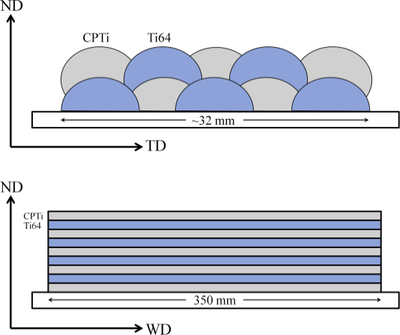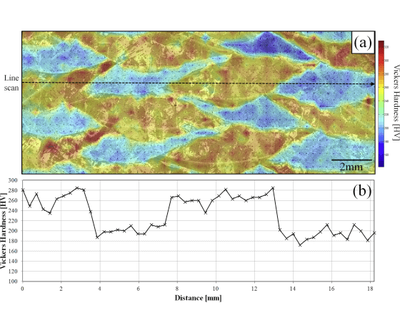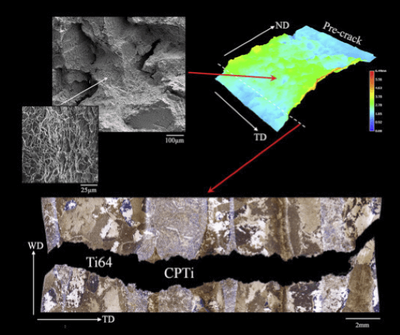


Mechanical performance and microstructural characterisation
Titanium alloy-alloy composites
A first stage study has been performed to investigate the potential for exploiting high deposition rate WAAM to print dual-alloy microstructures. Samples were built using alternating feed wires of commercially-pure Ti and Ti–6Al–4V. A high level of dilution occurred during deposition accompanied by effective liquid-phase mixing, producing a regular distribution of solidified melt tracks of approximate bimodal composition each less extreme than that of their respective constituent feed wires. The yield strength of the dual alloy composite material was approximately midway between that of the two alloys from which it was produced and exhibited a double inflection yield behaviour. Overall, because of the relatively coarse length scale there was not a significant property advantage in tensile loading above that of a chemically homogenous material, thus the main advantage of printing alternate alloys at this length scale is likely to reside more with increasing crack path tortuosity during fracture or fatigue loading. Importantly, the deposited material was found to have a refined β-grain structure suggesting that the composition gradients introduced by dual-alloy printing can disrupt the epitaxial columnar growth normally seen in WAAM deposits.
Davis, A. E., Breheny, C. I., Fellowes, J., Nwankpa, U., Martina, F., Ding, J., Machry, T., & Prangnell, P. B. (2019). Mechanical performance and microstructural characterisation of titanium alloy-alloy composites built by wire-arc additive manufacture. Materials Science and Engineering A. https://doi.org/10.1016/j.msea.2019.138289
Information
- Research Area:Material Development
- Publication date:27 March 2020
-
Investigators:
Phil Prangnell
, Alec Davis - Publications:https://doi.org/10.1016/j.msea.2019.138289
